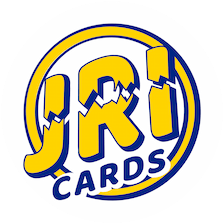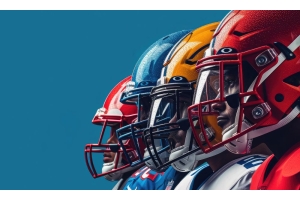The Ultimate Guide to Sports Card Grading Standards
The Ultimate Guide to Sports Card Grading Standards
Whether you’re new to collecting sports cards as a hobby or you’ve been here a while, you’ve probably heard about grading standards—but how do they work? If you stick a card into a top loader and put it in a cardboard box for 20 years, is that a PSA 10? Read on for the ultimate guide to sports card grading standards. You will even learn why the heck it’s called “mint” condition.
Importance of Card Grades
The simple fact of trading card collecting is that grades don’t matter at all if you don’t care about them. If you never want to sell your cards or learn what your cards are worth, don’t worry about card grading! People get into this hobby for all kinds of reasons, so don’t feel like you have to care about card grading standards just because you bought a pack of baseball cards.
On the other hand, if you’re interested in the value and protecting your cards, grading can add a whole new layer of enjoyment to the hobby. When you spot a card selling on eBay for $1,200 and think to yourself, “Hey, I have one just like that at home,” grading can tell you your card’s worth.
However, remember that grading cards costs money. You’ll need to pay a grading company to look at your cards. It’s probably not a great idea to send in your collection that you spilled chocolate milk on when you were 12.
Additionally, you may not want to bother grading cards that don’t have the potential for high value. If there’s a card in your collection in pristine condition, but the most that card sells for is ¢30, having that card graded as a 10 may not be worth your time or money.
Numbers and Terms
All the reputable grading companies grade cards on a scale of 1-10. A 1 is a card in poor condition, while a 10 is a card that has barely seen the light of day. Most grading companies also use half grades, so if a card is almost perfect, it may be graded as a 9.5 instead of a 9 or 10.
With the numbers out of the way, let’s talk terminology. Depending on the grading card company, you’ll hear a few different terms pop up. For example, a 10 from BGS is either “Black Label” or “Pristine,” while PSA refers to a 10 as “Gem Mint.” Essentially, if you have a card that’s graded a 10, it’s in perfect condition.
But why the term “mint condition?” The term “mint” originates from coins, not cards. As you probably know, coin factories are also known as mints, so “mint” refers to a coin that has just left the factory. For cards, you can think of “mint condition” as a card that went directly from a pack to a sleeve, without interacting with the outside world at all—no environmental damage, no skin oil, nothing.
Corners
One of the quickest ways to tell whether a card is in mint condition or not is by looking at the corners. It’s easy to crush, smush, or otherwise ruin any of the corners. Depending on the ink or foil on the card, you may see the illusion of damaged corners. If you aren’t sure whether your corners are in good condition, check the back of the card to see if the imperfections are also present there.
Edges
If corners are the quickest way to judge a card’s quality, edges come in at number two. Cards with dark borders tend to show edge imperfections more than others. If there are edge problems, you’ll see slightly crumpled edges, chipping, or fading. These imperfections happen over time when a card is handled outside of a protective sleeve or top loader.
Centering
Unlike corners and edges, you can’t do anything to protect a card from bad centering. Centering is determined based on the border width around the card. In a perfect world, the border sizing will be perfectly even all around the card. However, this is dependent on the printing process. This means that you can have a card with perfect edges and borders, but bad centering purely from unluckiness.
Surface
Finally, the surface condition refers to the condition and appearance of the cardboard as a whole. Surface problems include scratching, chipping, creasing, dirt, and grime. Cards from the 1980s may also have problems with smearing, which comes from the printing presses used at the time.
Autographs
Some of your cards may also be autographed. While this can increase the value of your card, autographs also have a few degrees of quality. For instance, faded or smeared autographs will fetch a lower price than crisp, dark ink.
Keep in mind, we’re referring to out-of-the-pack autographs, not hand-signed autographs.
How To Have Your Cards Graded
After a good card break, what happens next? Well, if you want to have your cards graded, you’ll need to prepare to send your cards away. First, put your cards into penny sleeves. Penny sleeves are a basic form of protection that keeps your card’s surface in good condition.
Then, stick a post-it flag to your penny sleeve so that the flag sticks up a little. This will make it easy for your grader to remove your card from a Card Saver to grade it without damaging your card.
Next, put your card into a Card Saver 1—this is the standard card holder that graders accept cards in.
Finally, wrap up your cards in bubble wrap and seal it with blue painter’s tape before loading them into a bubble mailer.
Now that you have the ultimate guide to sports card grading standards, you’re basically an expert ready to professionally grade cards yourself. OK, maybe we shouldn’t go that far.
Regardless, we hope this guide helps you understand why grading is so important and gives you an idea of where some of your cards fall on the grading scale. Now, come find cards in prime condition from our live card breaks (you know we had to work a shameless plug in there). We can’t wait to see you in the chat of our next livestream!








